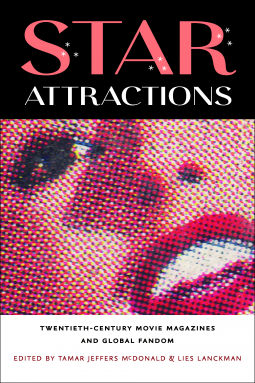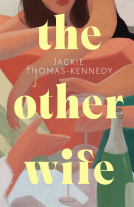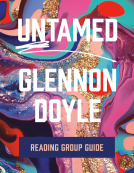
Star Attractions
Twentieth-Century Movie Magazines and Global Fandom
by Tamar Jeffers McDonald and Lies Lanckman, editors
This title was previously available on NetGalley and is now archived.
Send NetGalley books directly to your Kindle or Kindle app
1
To read on a Kindle or Kindle app, please add kindle@netgalley.com as an approved email address to receive files in your Amazon account. Click here for step-by-step instructions.
2
Also find your Kindle email address within your Amazon account, and enter it here.
Pub Date Dec 15 2019 | Archive Date Dec 15 2019
University of Iowa Press | University Of Iowa Press
Talking about this book? Use #StarAttractions #NetGalley. More hashtag tips!
Description
During Hollywood’s “classic era,” from the 1920s to 1950s, roughly twenty major fan magazines were offered each month at American newsstands and abroad. These publications famously fed fan obsessions with celebrities such as Mae West and Elvis Presley. Film studies scholars often regard these magazines with suspicion; perhaps due to their reputation for purveying scandal and gossip, their frequent mingling of gushing tone, and blatant falsehood.
Looking at these magazines with fresh regarding eyes and treating them as primary sources, the contributors of this collection provide unique insights into contemporary assumptions about the relationship between fan and star, performer and viewer. In doing so, they reveal the magazines to be a huge and largely untapped resource on a wealth of subjects, including gender roles, appearance and behavior, and national identity.
Contributors: Emily Chow-Kambitsch, Alissa Clarke, Jonathan Driskell, Lucy Fischer, Ann-Marie Fleming, Oana-Maria Mazilu, Adrienne L. McLean, Sarah Polley, Geneviève Sellier, Michael Williams
A Note From the Publisher
Contributors: Emily Chow-Kambitsch, Alissa Clarke, Jonathan Driskell, Lucy Fischer, Ann-Marie Fleming, Oana-Maria Mazilu, Adrienne L. McLean, Sarah Polley, Geneviève Sellier, Michael Williams
Available Editions
| EDITION | Other Format |
| ISBN | 9781609386733 |
| PRICE | $55.00 (USD) |
| PAGES | 282 |
Featured Reviews
An interesting and entertaining companion to star history and fan history, from a selection of authors who know their subjects well. For a layperson, good to read an academic take on this subject and to understand that the context that gave rise to this sort of film journalism that was very specific to a time and place. Would recommend as a companion to any serious movie fans.
 Michelle S, Reviewer
Michelle S, Reviewer
“Star Attractions: Twentieth Century Movie Magazines and Global Fandom” (2019) written by editors Tamar Jeffers McDonald and Lies Lanckman is a comprehensive and well researched study of historical movie magazines in combination with film and celebrity culture and its influence on worldwide social norms and attitudes-- as well as political and religious views and customs. The public fascination with celebrities is widely recognized and noted throughout the book by peak years of movie magazine sales to the eventual decline with arrival of television and internet news.
Motion Picture Story Magazine debuted in 1911, and was the first publication to experiment with a format that avoided the prevalent trade journal style of newspaper print. The magazine was so successful that numerous copy-cat magazines followed. The goal of the new publications was to have readers feel as though they were “confidants” or “insiders” that connected with the cinema and stars. Photoplay (1913) was the first magazine to write on the cover that featured a beautiful woman (artistically drawn). By 1914, film and celebrity gossip was more noticeable and by the 1920’s editors realized the value of splashy cover photos and sensational titles, quotes from the stars and “come-on lines” to entice readers to inside articles. Often this was a predictable bait and switch tactic, though during this time period celebrities connected with their fans by actually responding to fan letters, some had their own columns. Gradually, the fan magazines became more critical and judgmental of Hollywood culture, as some magazine columnists became household names and established careers.
It was noted that the Media History Digital Library (MHDL) was a valuable and important source for study and research for film scholars and fans alike. It was quite informative to learn that the contemporary review (of film and later literary format) originated in France. The “cinephilla” was designed by film critic Louis Delluc (1920). Ordinary box-office films were excluded from review, only certain French films were deemed worthy of evaluation for discriminate “elite” audiences. The movie review didn’t gain in popularity until the 1950’s when box-office films were widely reviewed by critics.
A wide variety of topics were covered in the book: In Romania, “The Cinema” (magazine) was owned and published by the Romanian government (1963-89). The magazine promoted Marxist Leninism communist propaganda while enthusiastically supporting people of art, science and culture: using the national cinema to educate the population. A similar ideology was observed by the Malaysian government, where the cinema was used to reach and influence the public.
The final part of the book covered the production details of movie Ben Hur (1959). The biographical details of Mae West (1893-1980) and her sensational unmistakable influence on popular film culture was fascinating. The Russian “silent film” actress Alia Nazimova (1879-1945) was nearly forgotten until a cache of memorabilia/costumes were found in Georgia in the trunk of a car. Nazimova was ahead of the times and resisted the social expectations and norms that marriage and family were the only options for women. Viewed as “exotic” (because of her foreign Heritage) she also had both male and female lovers.
In 1960’s Britain, Albert Hand managed the Elvis Presley Fan Club, and contributed to the Elvis Monthly (magazine). In 1961 the circulation was 60,000 per month by the mid-1960’s magazine sales were estimated at 100,000 per month. Though many fans felt Elvis was becoming too commercialized, many resisted the notion to compare their devotion and fandom to a religious faith, which was quite similar.
The authors presented the facts and data in a very interesting way. The final chapters that cover the individual celebrities follow a compelling mini-biographical format. The book could easily become part of a film studies curriculum or would be of interest to readers seeking insight and understanding of fandom or sociology issues. ** With thanks and appreciation to the University of Iowa Press via NetGalley for the DDC for the purpose of review.
 Leslie G, Book Trade Professional
Leslie G, Book Trade Professional
Terrific premise to examine magazines not only over their relatively recent history, but internationally, and then also, from a variety of scholars. To read serious scholars making interesting, sometimes arresting , comment about pop culture is also curious to regard .. what's their attitude? In this case writers are respectful but with humor at times and it was additionally entertaining for me to read the celebrity stories they refer to as evidence in their analyses. They ate sp familiar, it makes me question current salacious (or otherwise) tabloid stories about celebs. Highly readable for most part, and great communications topic!
 Kendahl C, Reviewer
Kendahl C, Reviewer
Star Attractions: Twentieth-Century Movie Magazines and Global Fandom is a collection of essays that takes a serious-minded look at what is often seen as the frivolous topic of movie magazines. The twelve pieces gathered here find the substance in these periodicals, from the fans that populate Letters to the Editor sections to the stars that are the subjects of their pages. It is an academic take on the subject, and thus not a light read, but it is a fascinating exploration of many aspects of these once hugely popular magazines.
I was most fascinated by book co-editor Lies Lanckman’s essay, In Search of Lost Fans: Recovering Lost Fan Magazine Readers, 1910-1950, in which she dives into the data behind fan magazine letters sections. Since many of these magazines took liberties with the truth when it came to writing about the lives of the stars, it is reasonable to think that some or possibly even all of these letter writers could have been creations of the editors. Lanckman tracks down several of these letter writers via census records, both determining that these contributors were in fact real and also finding a lot of interesting information about what kind of people wrote to fan magazines.
While Hollywood film magazines get the bulk of the attention, there are also pieces covering periodicals about Malay, French, and Romanian cinema, not to mention an exploration of the public image of British star Ivor Novello (most famous for Alfred Hitchcock’s The Lodger [1927]). There’s also a history of the long-running Elvis Presley movie fan mag. Elvis Monthly and a pair of intriguing pieces about the images of two of early Hollywood’s most powerful actresses, Mae West and Alla Nazimova.
With diverse subject matter and widely different approaches to each topic, Star Attractions is most rewarding taken a piece at a time. It is a varied, thoughtful approach to exploring a subject that seems light on the surface, but becomes more significant when you consider the influence these magazines had on their audience.











